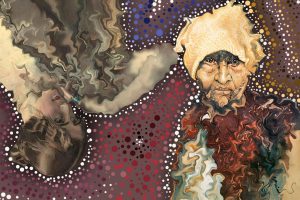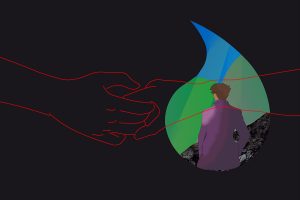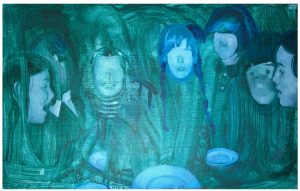Africa Fashion Week London
by Lina Osman | November 6, 2024
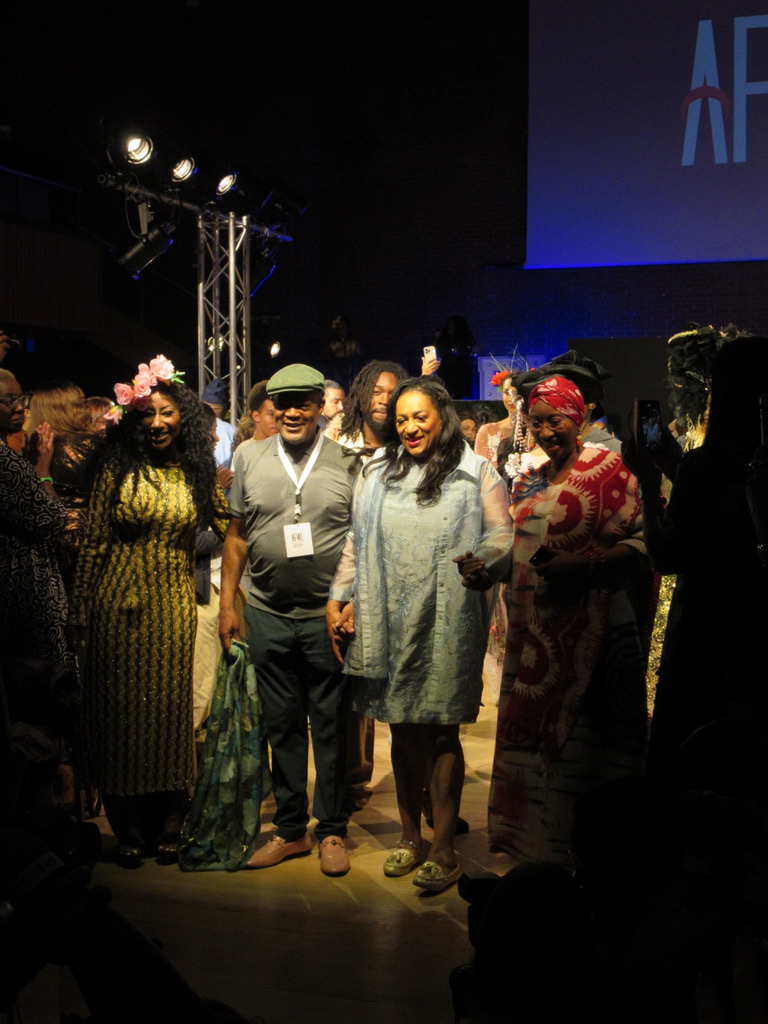
I’ve had a long-running debate with a friend about the Sudanese toub. I’ve always dismissed it as just a piece of cloth. “It’s nothing special,” I’d say. But, after attending Africa Fashion Week London (AFWL), I began to realize just how special it is. The toub, much like African fashion itself, is stitched with history, resistance, and the essence of our people. At AFWL, this truth unfolded before me in every design, every stitch, and every strut down the runway.

(The woman farthest left is wearing a ‘toub’)
Founded in 2011 by Queen Ronke Ademiluyi-Ogunwusi, Africa Fashion Week London is Europe’s largest platform for promoting and nurturing African and African-inspired design talent. As soon as I arrived at the press conference, it was clear this wasn’t just a fashion event—it was a family gathering. HRM Queen Ronke is the heart of this event and embodies its spirit. She poured her own money into keeping AFWL alive when it was on the brink of collapse. Her determination was felt in every detail of the event. Yet, there’s an unspoken frustration in the air—the kind that every Black person in the room already understands. It hit me when Samson Soboye, Founder and Creative Director behind ‘SOBOYE’ Fashion and Lifestyle brand, spoke. Soboye said that he is tired of, “knocking on the door”, instead it’s time to “kick it down.” Despite the brilliance of the event, it still isn’t as big as it should be, and we know why. “We who are loud and angry, we who are bold and brash. We who are Black,” as Caleb Azumah Nelson put it.
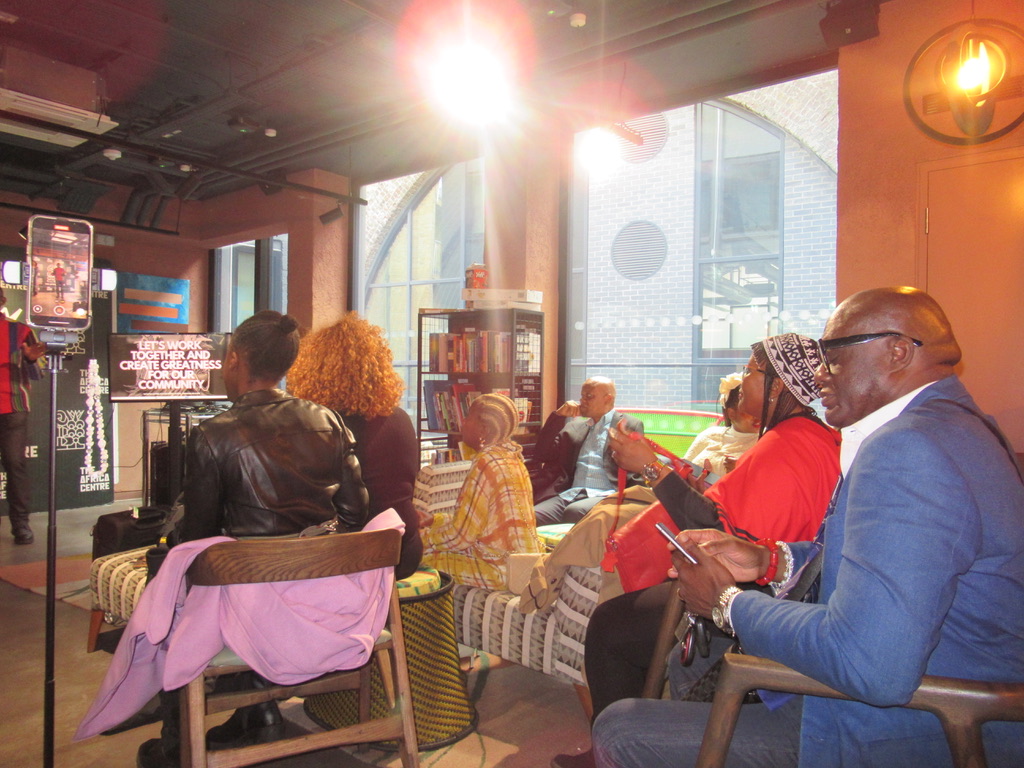
(AFWL Press Conference)
Hearing Tokunbo Fasorotell, creative director of ‘Lioness by TF’, tell her story solidified what kind of event this would be. She learned the craft from watching her mother and fashion films from as young as seven years old, later selling her clothes in school. She started a ready-to-wear brand in Lagos, with dreams of becoming just like Prada. However, this was not possible for her in Nigeria. Her husband suggested relocating to the UK. She related how the “Holy Spirit”, in the middle of the night, told her to move. Those early months were hard. But she had a revelation: this was her chance to build the fashion empire she’d always dreamed of. Within 24 hours of this, she went to a party wearing a garment she had made; after one conversation she ended up with a warehouse. Ten months into launching her brand, she was featured in Vogue, and the rest is history. Fasorotell reminded me of my mother and grandmother—of the women who have struggled and sacrificed so I could stand here and dream even bigger. I felt compelled to call and thank them.
The first show of the day was Mary Martin’s 10-year anniversary collection, a homage to creativity, resilience, and power. The show opened with a spotlight on a woman narrating the origins of the universe, with Van Gogh’s artwork projected in the background. Models dressed in cavewoman-esque attire set the tone. From there, the runway transformed into a celebration of Black womanhood in all its glory. Martin’s pieces ranged from woodland fairies to regal queens, all set against a backdrop of operatic music. The show became participatory, with the audience joining the models in dancing. It embodied a collective joy: earthy, ethereal, and divine.
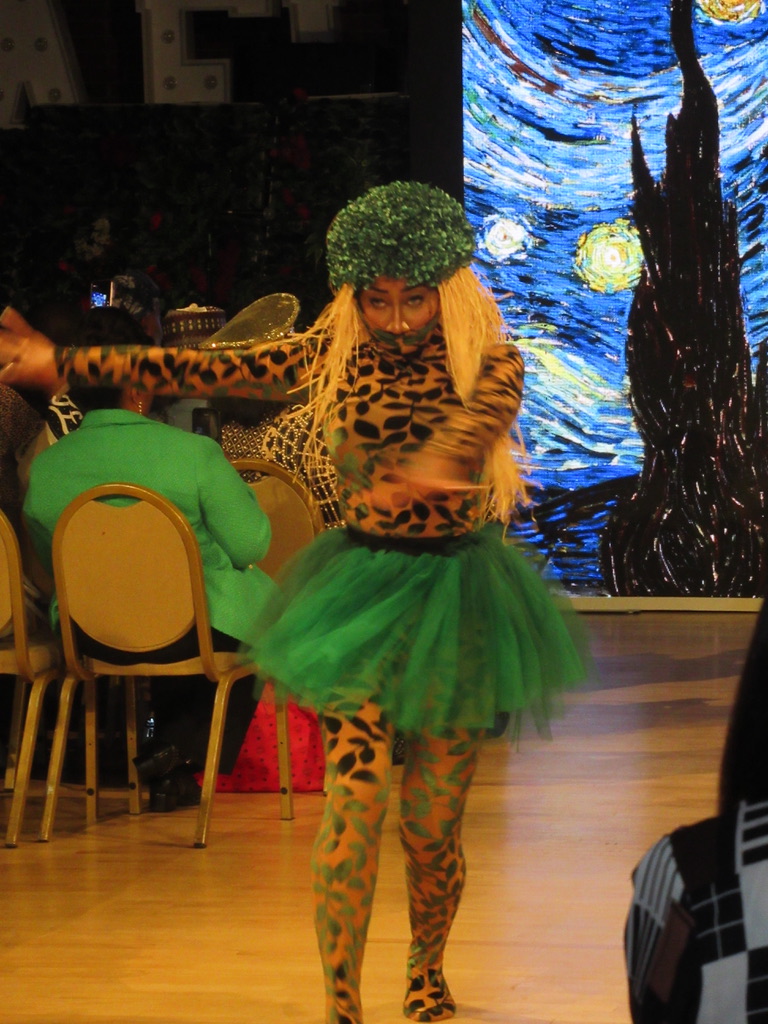
(Opening of Mary Martin London’s 10 Year Retrospective Showcase Catwalk)
What struck me most about Mary Martin’s work was its duality. Some collections were fierce tributes to resistance, paying homage to ancestors and the enslaved, while others portrayed Black women as soft, delicate, magical beings. It was refreshing to see a shift from the usual narratives of strength and struggle. Here, Black women were allowed to be everything at once. One collection, Hidden Queen, inspired by Benin’s Queen Idia known as “the hidden Oba of Benin”, literally concealed queens within the garments. The show was an overdue love letter to Black women who have long been hidden, but never lost.
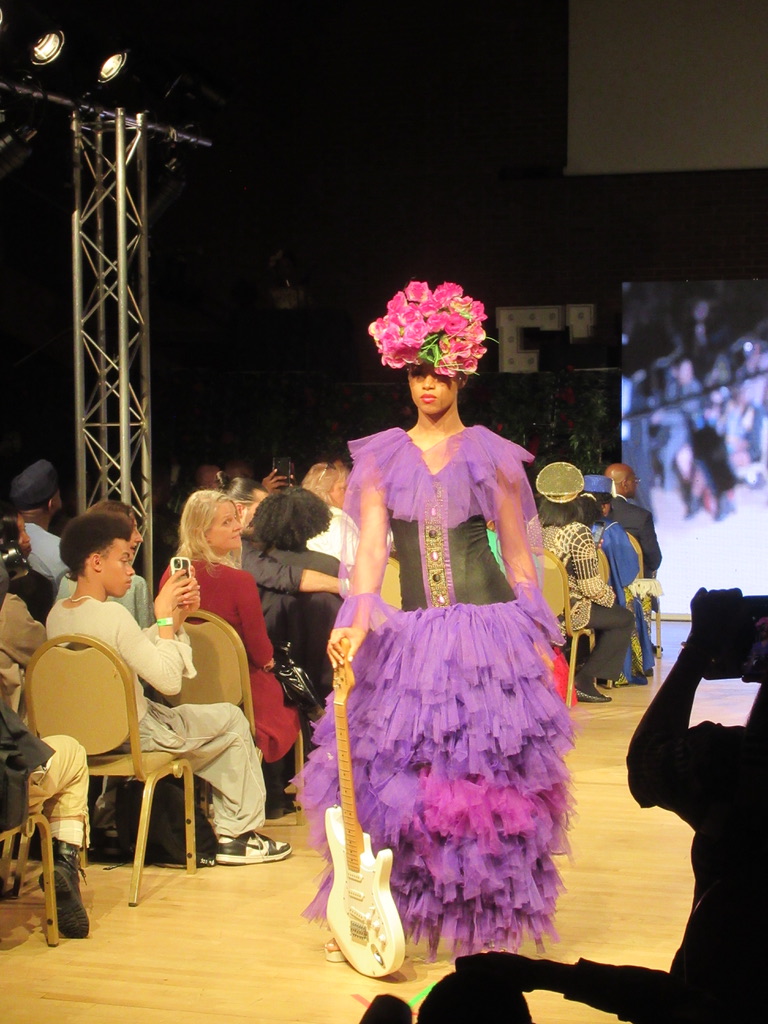
(Mary Martin London Pieces)
Textile Design and MA Fashion Design students at Winchester School of Art, mentored by Samson Soboye, showcased their futuristic, cool pieces. Although most of the students weren’t African, their work demonstrated the universal appeal of African fashion. An affirmation that it’s for everyone, everywhere.
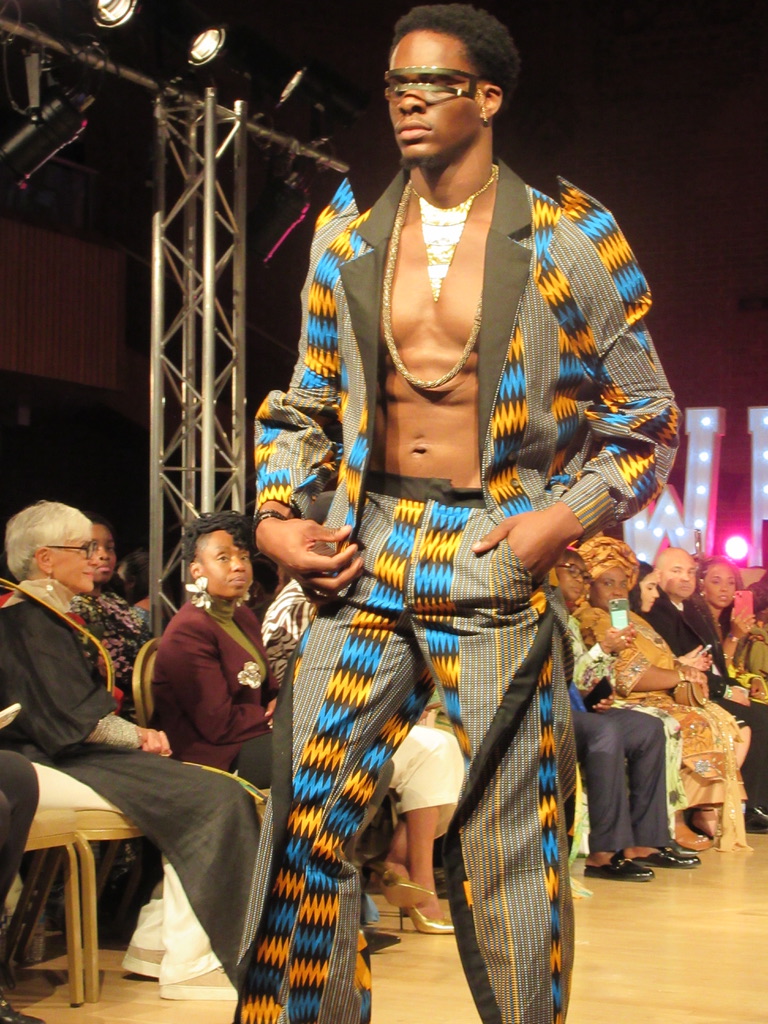
(Piece by a Winchester School of Art Student)
Andrew Tabitha followed with well-tailored, everyday pieces that exuded ease.
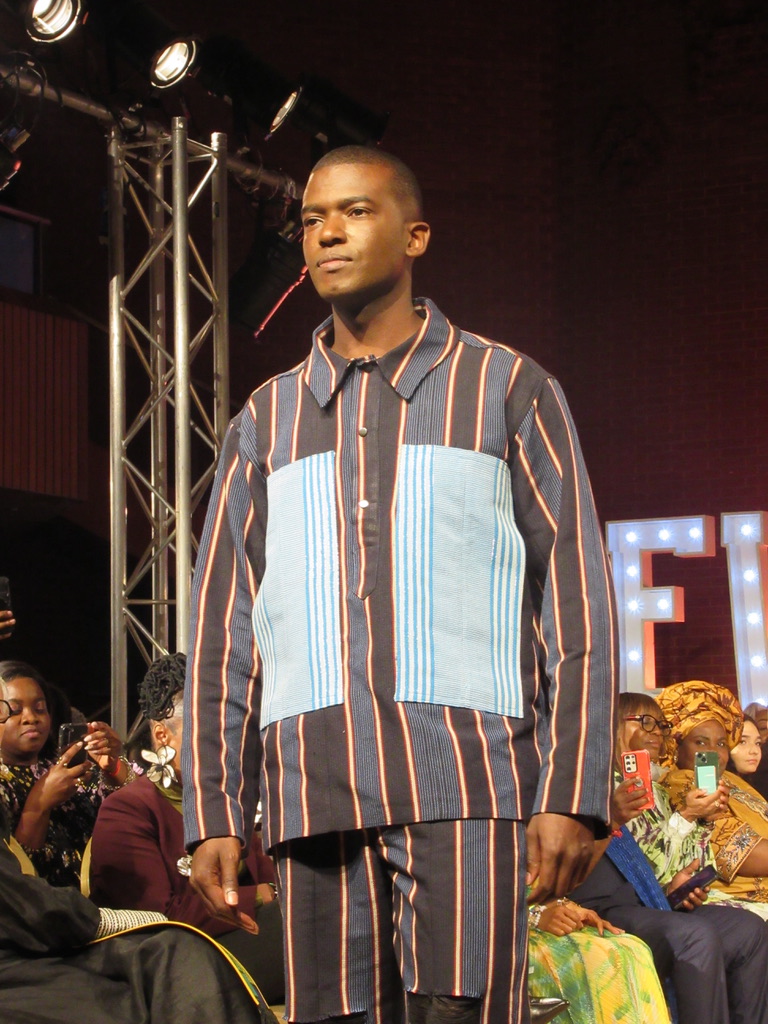
(Andrew Tabitha piece)
House of Nikee’s African womenswear, stunning in both concept and structure, was nothing short of a masterpiece.
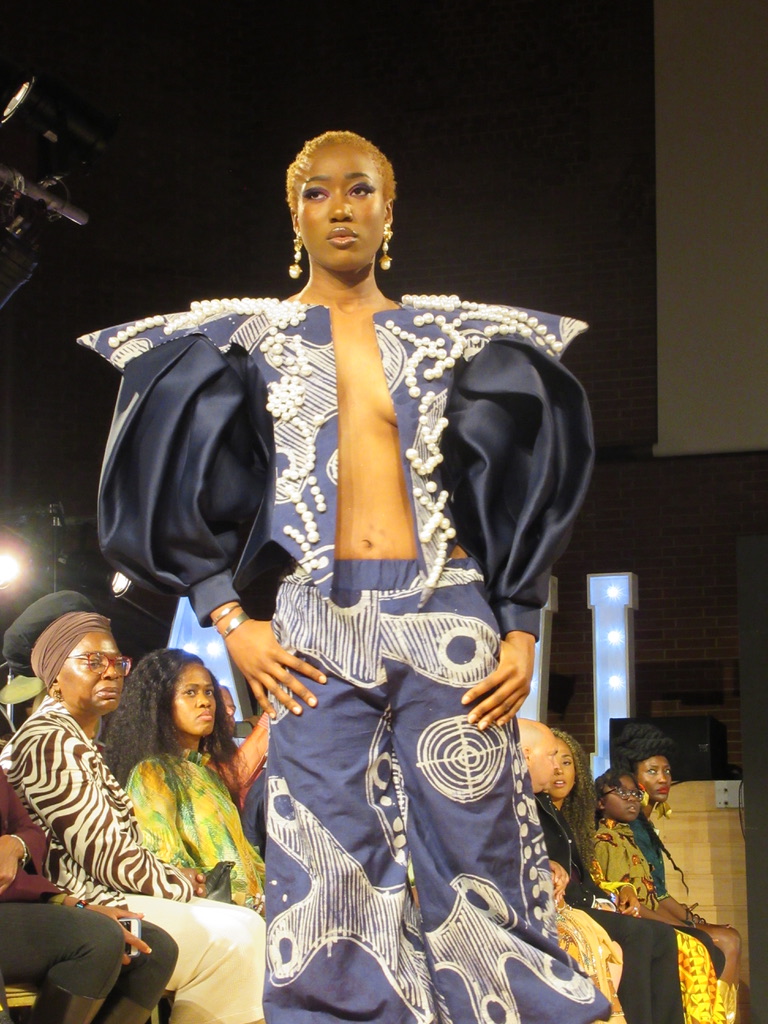
(House of Nikee piece)
Roots of Fatima then took the stage with models of all shapes and sizes draped in sexy black and gold garments, showcasing Black women in all their beauty.

(Roots of Fatima piece)
Lou Aymé’s menswear, with unique, shimmering fabrics, has officially made it onto my vision board of dream men.
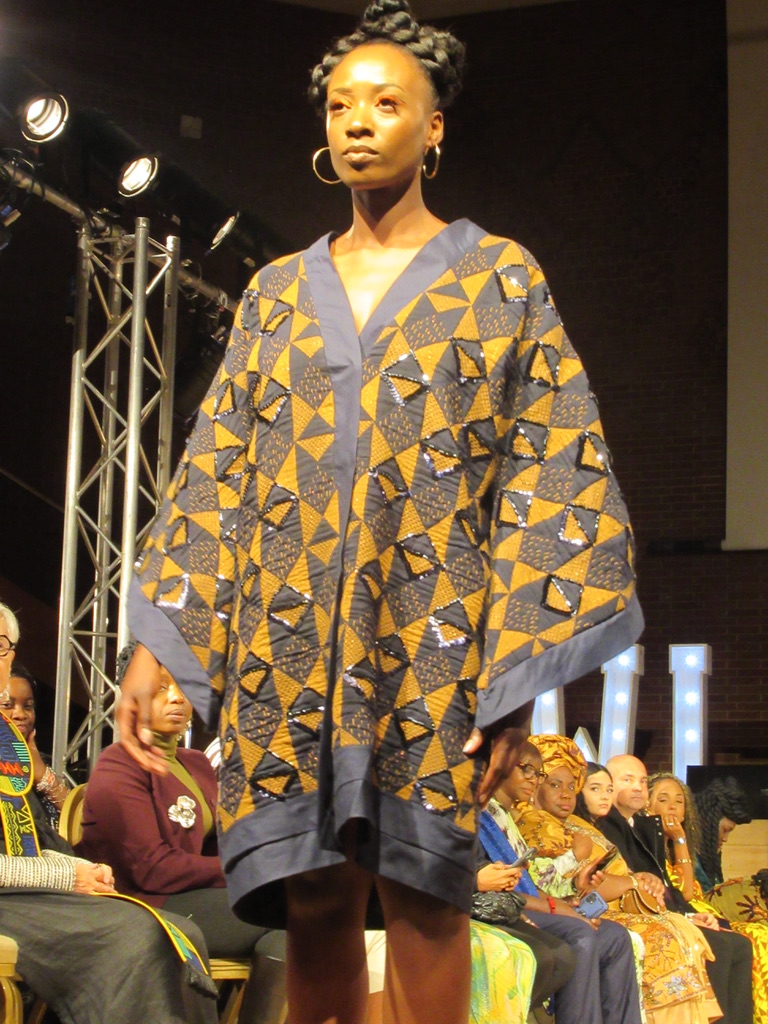
(Lou Aymé piece)
Then, there was Tuntop Fashion House, which brought pure joy to the runway. Models clapped and danced to Pharrell’s Happy, turning the runway into a celebration of life. This was African fashion in its truest form, saluting joy, defiance, and the healing power of celebration.
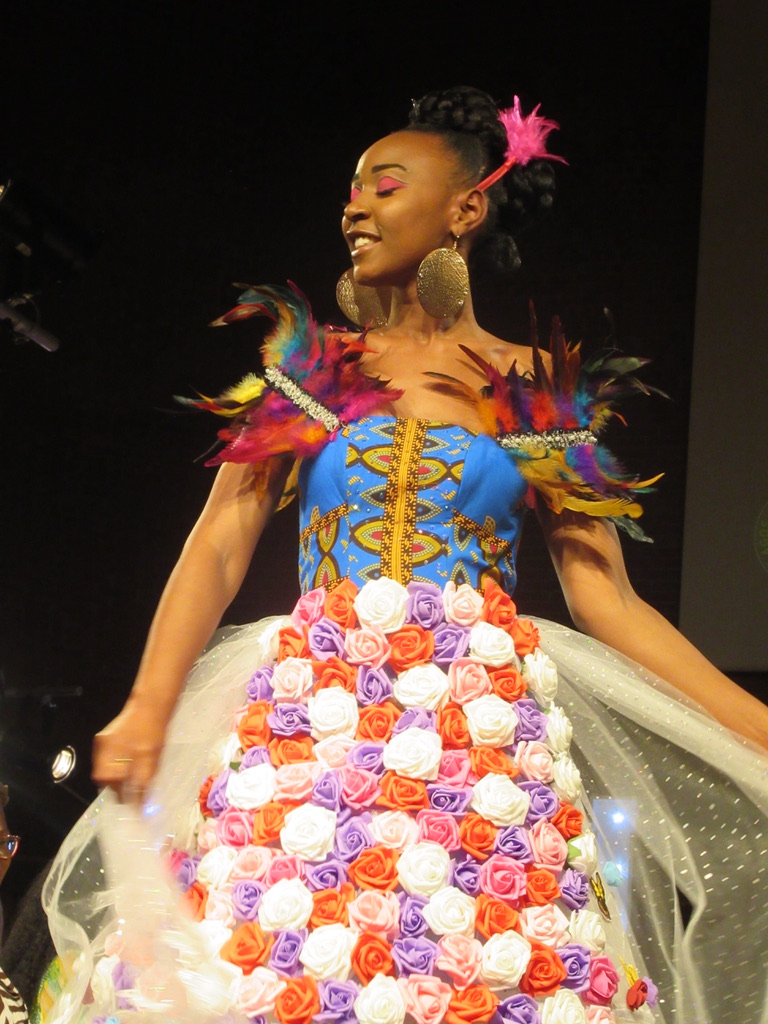
(Tuntop Fashion House piece)
Àdìrẹ Oodua Textile Hub, designed by Queen Ronke herself, was equally moving. Àdìrẹ, which translates to “tied and dyed” in Yoruba, holds a deep significance. The Hub supports designers who can’t afford the immense cost of importing fabrics from overseas. Queen Ronke has trained over 1,000 women and young people for free. This is a reminder of how African textiles, from Kente to Ankara, have always carried a weight that transcends fashion. Her collection, inspired by the stolen Yoruba bronze heads, was bold, elegant, and a testament to sustainable fashion long before it became a buzzword.
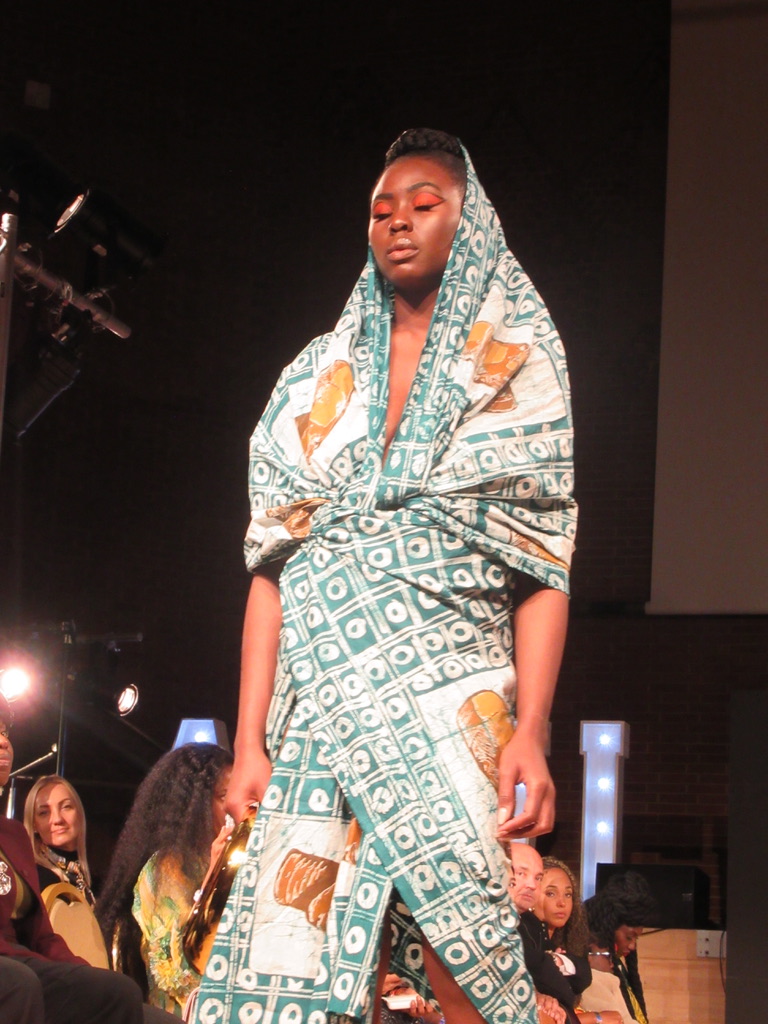
(Adire Oodua Textile Hub pieces designed by Queen Ronke)
Between shows, I was encouraged to get some delicious food and grab a drink from a bar run by a mother and daughter. Later, I shared a laugh with another bartender as I sipped palm wine, feeling like we’d known each other for years. Everything about AFWL felt like a family gathering, not just in the literal sense, but in spirit. We exchanged stories over palm wine, reminding me of the communal joy that threads through so much of African culture. As I wandered through the Trade Expo, people were eager to speak with me, share their stories, compliment my hair, and ask where I was from.
By the 7 pm show, Soboye took centre stage with The Black Majesty Collection. His designs, inspired by historical Black figures like King Solomon, were regal and fierce. It was a declaration that Black fashion is more than just a trend: it’s an assertion of presence and power. Soboye’s collection reminded me of sapeurism, the Congolese subculture where style is a form of resistance. It’s a way to reclaim dignity and express individuality. The collection served as another reminder that African fashion can embody protest, while remaining beautiful, soft, and multifaceted.
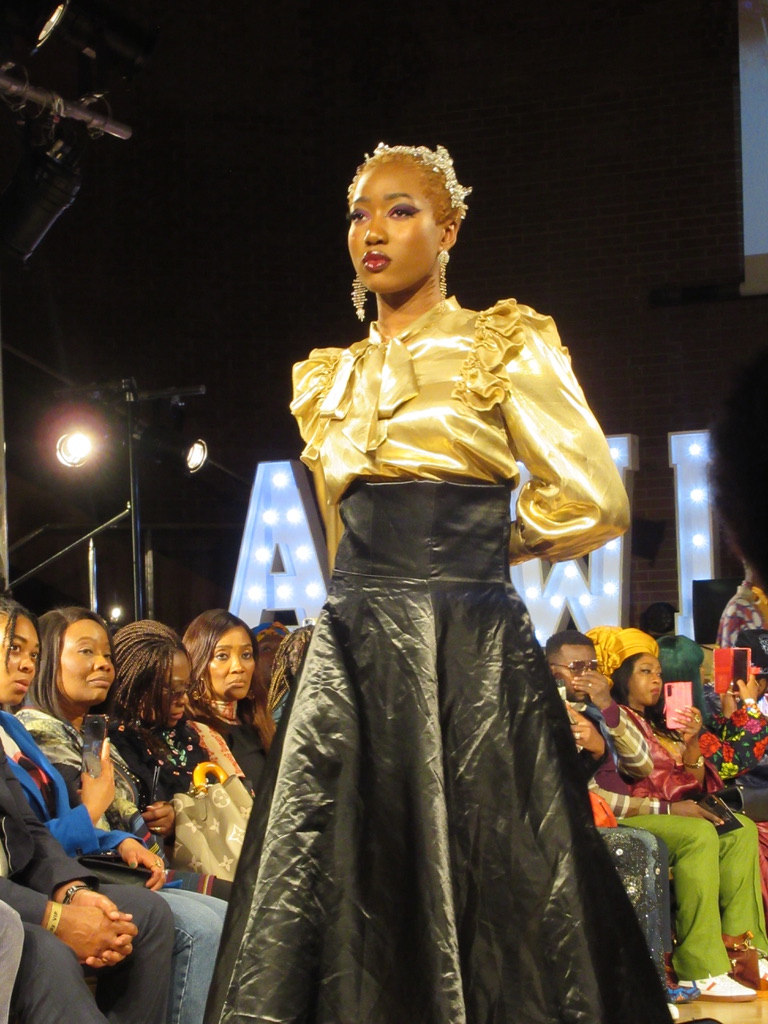
(‘Black Majesty’ by Soboye)
As the night ended, Bouqui Glam House showcased stunning Nigerian-inspired gowns that instantly had me picturing Oxford students wearing them to formal events – another item added to the vision board. I was particularly captivated by the stunning princess gown, with the model walking in tandem with a male model dressed in garments inspired by Nigerian royal fashion.

(Bouqui Glam House piece)
David Wej Lagos followed with sleek menswear, modelled by stars like Charles Venn and Dami Hope.
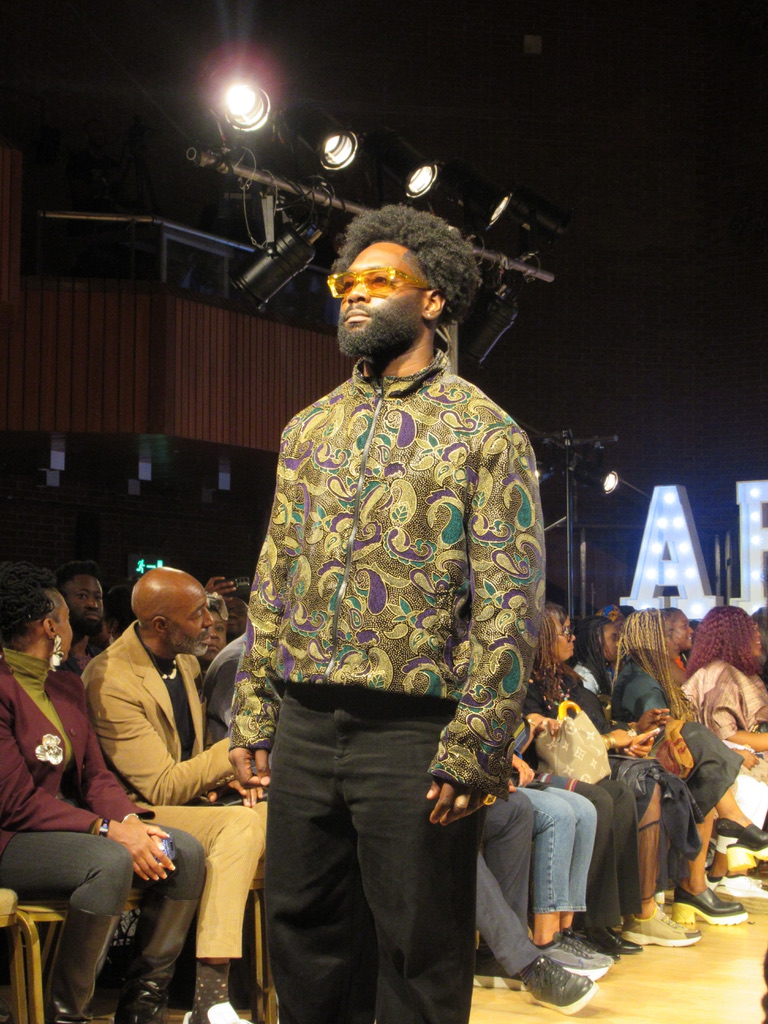
(David Wej Lagos piece)
House of Sheba’s collection was a refreshing celebration of plus-size Black women. The models confidently owned the runway in vibrant, colourful designs. It was powerful to see women of all shapes, embracing their bodies and radiating joy with every step.
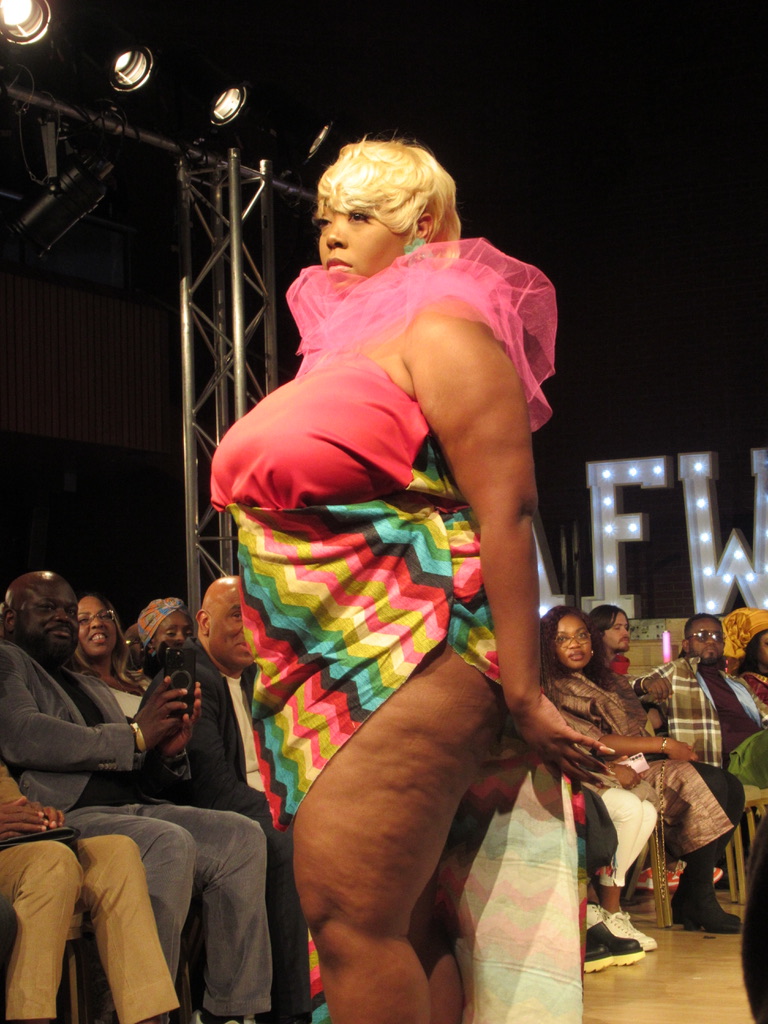
(House of Sheba piece)
Made in Africa followed with streetwear so fresh it had me rethinking my loyalty to Nike and Adidas.
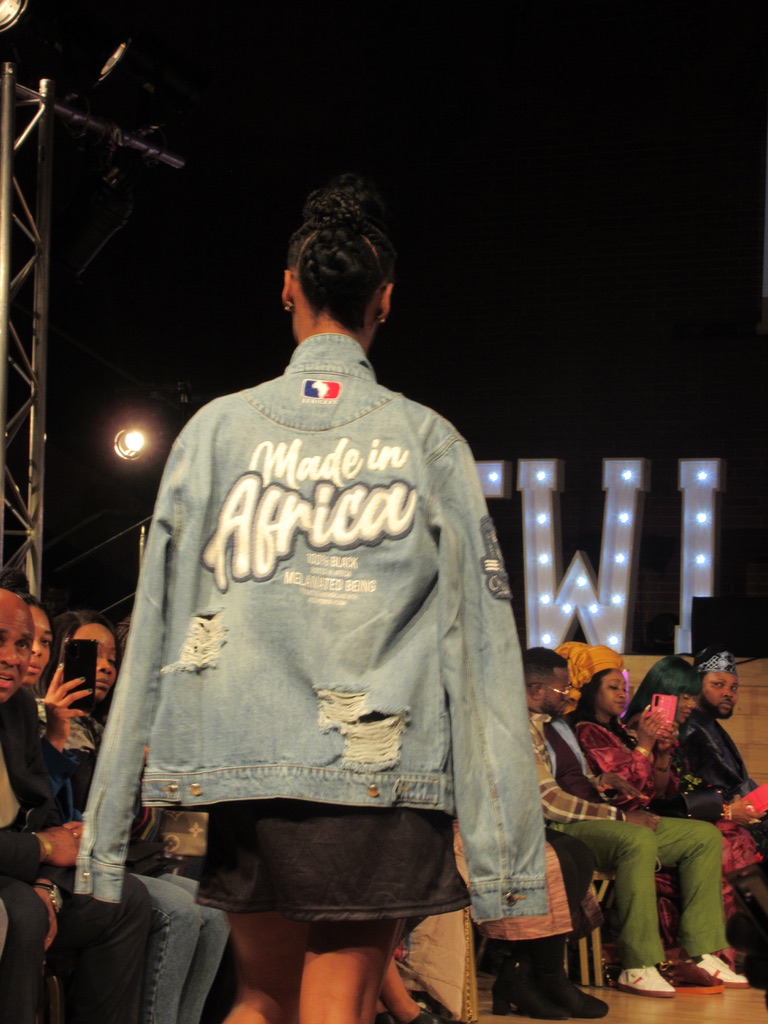
(Made in Africa piece)
In the evening, Simeogieme presented ‘The Abundance Collection’. This was a beautiful and playful tribute to her mother, featuring colourful, flowing designs. Iffizi followed, with her own mother walking the runway. Despite her clear nervousness, the audience cheered her on, applauding with warmth and encouragement. Once again bringing the family spirit to life.
Mumini brought Sierra Leonean pride to the stage, incorporating the nation’s colours into the collection and even using the flag as an accessory. The subtle Arab influences were a nice touch, reflecting Sierra Leone’s rich history and diverse cultural background.
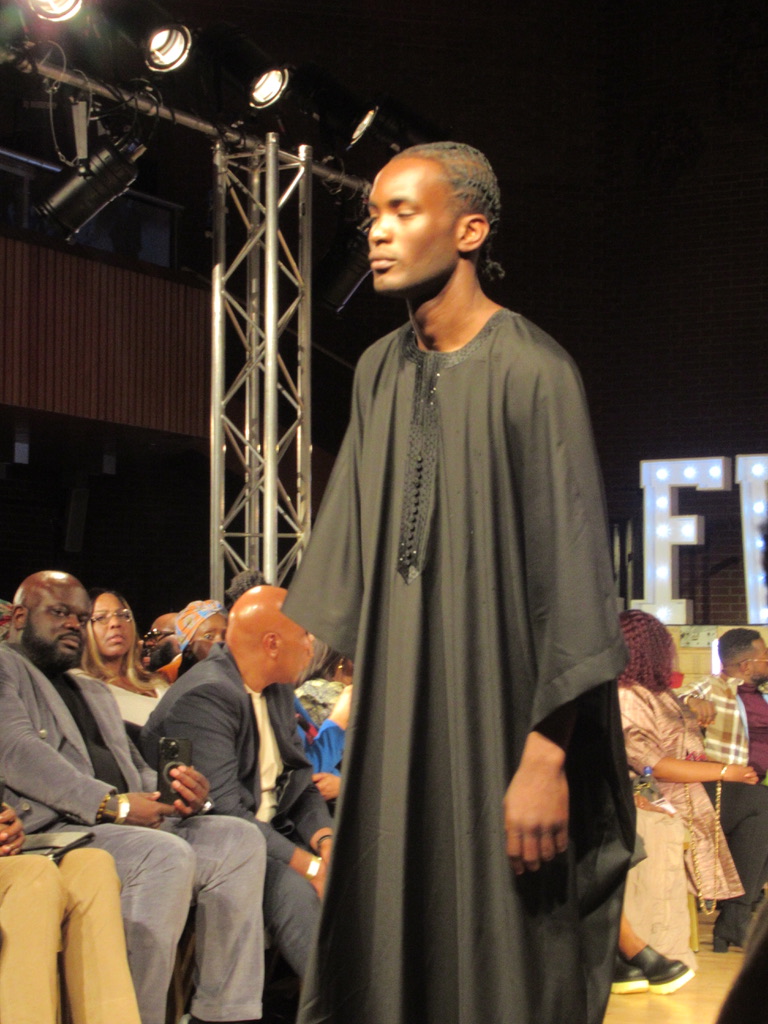
(Mumini piece)
The night ended on a powerful note with Aderiyike x Toté London. Aderiyike, the first African sunglasses designer, spoke at the press conference about her dream of building a brand that will endure for a century. Her ambition, like so many others at AFWL, is a reminder that African fashion belongs on the world stage – not as a niche, but as a force.
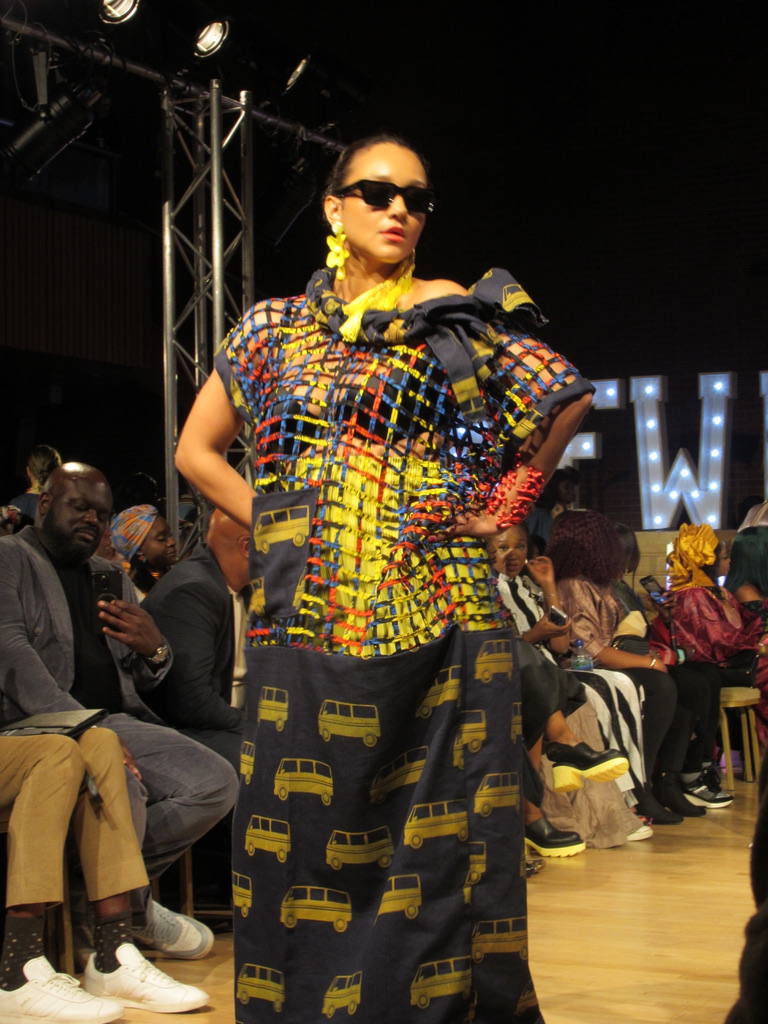
(Adreiyike glasses, Toté London clothing piece)
The show wasn’t perfect. There were a few trips, some wardrobe malfunctions, but that’s exactly what made it feel alive and real. The music, the dancing, the imperfections were all part of the joy, the warmth that permeated the event. AFWL was like a welcoming family. They invited you in, offered you a drink, and asked you to stay a while.
If I had to sum up Africa Fashion Week London in one sentence, it would be this: everyone should go and everyone should wear more African fashion. It’s not just cool or sexy. It’s regal, bold, and new. It’s anything you want it to be. As I walked away from the show, I found a newfound pride in the Sudanese toub I once dismissed. It might just be a piece of cloth, but it’s woven with love and family. When my mum makes me wrap her toub before a wedding, she is asking me to love her. She is showing me her childhood, inviting me in and asking me to stay until we can go back home. That, too, was AFWL. I cannot wait to go back to Sudan, and to AFWL. ∎
Words by Lina Osman. Image Courtesy of Lina Osman.

